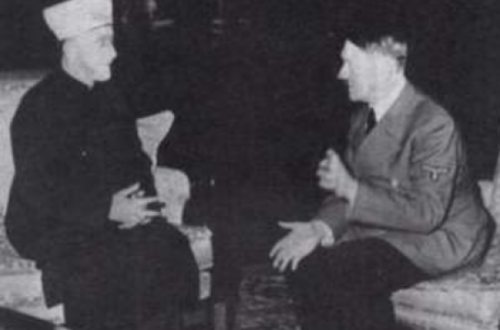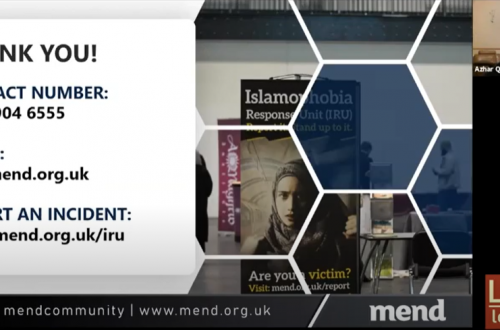There’s a good piece in Haaretz today, with which I agree, by – don’t gasp now! – Rachel Shabi. Here is the heading and subheading:
Criticize Israel – but without the vile and offensive cartoons
Even if Scarfe’s cartoon isn’t anti-Semitic, it is still vile and offensive. Given enduring, and well-founded, Jewish sensitivities over certain imagery, it is manifestly preferable to caricature and castigate Israeli leaders without them dripping buckets of blood. There is hardly a shortage of material.
And here is the key section of her argument:
It’s a rare event for me to be in agreement with the U.K. Jewish Chronicle’s editor, Stephen Pollard, but that is what happened after the publication of a cartoon by Gerald Scarfe in last weekend’s London Sunday Times, on International Holocaust Remembrance Day. The now-infamous cartoon has Benjamin Netanyahu building a wall using blood as cement, trapping anguished, Palestinian-looking people in between the bricks
…
I don’t think the cartoon is anti-Semitic – as Anshel Pfeffer has pointed out in Haaretz, it does not feature a Star of David, a kippa, or any other giveaway visual code references to Jews. But it is nonetheless a vile and offensive cartoon, because of all that spurting blood-as-cement and the inevitable blood libel associations. I know this isn’t absolutely water-tight, technically, or unanimous, or straightforward; I know many think that I should just get over it, but there it is: it triggers unease over the association of a Jew with another people’s blood. That’s where I agree with Pollard: the bit about cultural resonances.
Should the media tell other people when it is appropriate, or not, to have their cultural sensitivities offended? Should cartoons constantly push those buttons to try to prove that they don’t really exist? And when people say they are offended by cartoons, do we tell them to shut up because there are greater things to be offended by?
This is essentially the same argument made by Mark Gardner of The CST, last week.
The blood imagery, sometimes explicitly as Blood Libel, is commonly found in obscene anti-Israel propaganda in Arabic and Iranian media. Scarfe’s image comfortably fits within this canon of extreme contemporary anti-Israel hatred.
…
As ever, we are immediately drawn into the old ‘is it antisemitic, isn’t it antisemitic’ routine – as if anybody could ever prove what actually goes on in Gerald Scarfe’s head; and as if what goes on in his head is the most important thing in all of this.
For sure, Gerald Scarfe has ‘a thing’ about blood. It is a theme that repeats in his cartoons. For example, his Sunday Times cartoon of 26th February 2012, literally shows Syria’s President Assad guzzling blood from a cup that has “children’s blood” written on it. So, he has not singled out Benjamin Netanyahu for the blood treatment and he is perfectly capable of drawing a full-on blood libel should the mood take him. Neither has Scarfe singled out Netanyahu for physical disfigurement. This is how he draws people, regardless of their nationality or religion.
Unfortunately for Jews – and for satirists – antisemites and antisemitism also have ‘a thing’ about blood; and especially about the allegation that Jews murder others (children in particular) in order to use their blood or organs for heinous purpose. It is a harsh fact that blood has long played a profoundly disturbing part in the history of antisemitism, and this has obvious consequences for Jews and antisemites today. The actual intentions of Gerald Scarfe and the Sunday Times count for very little within this broader context of history, and its contemporary emotional and racist impacts.
So, the cartoon, regardless of the wishes of Scarfe and the Sunday Times, regardless of it specifically being anti-Netahyahu rather than anti-Jew, will seriously distress many Jews and will give pleasure to many antisemites. (Indeed, CST has already received many calls and emails on this cartoon from upset and angry members of the public.) This is, after all, how antisemitism actually works, for its victims and its proponents. For those practical reasons, this cartoon will (like the Dave Brown / Independent cartoon of Ariel Sharon eating babies) be perceived as part of the canon of contemporary antisemitic imagery, as are the many other cartoons that associate Israeli leaders with blood in hideous ways.
And, with the cartoon having been published on Holocaust Memorial Day, its power to offend and upset the emotions of Jews is greatly worsened.
Both writers make it clear that the objection is not that “this is an antisemitic cartoon”. Rather, it is a more subtle argument, which explains how this sort of blood imagery feeds into the cultural experience of persecution, and therefore seeks to provide some insight into why it is that, on Holocaust Memorial Day, such imagery is likely to produce a sense of depression, fear and bewilderment in many Jews.
Each minority will have similar buttons that can be pushed, and generally speaking, it is only wind up merchants who push them deliberately. Read Adam Levick’s excellent article here, where he argues from analogy with the experience of Americans of the legacy of anti-Black racism.
It is perfectly acceptable for people to explain – as Rachel Shabi and Mark Gardner have both done – why some imagery is likely to have this powerful impact upon some people. What is not acceptable, of course, is to riot, threaten, or kill people who draw pictures that upset you.
Given that this is Mark’s argument, I have to say, I’m a bit surprised to see that when The Guardian republished it, they did so under the following headline:
Is the Sunday Times cartoon antisemitic?
YES: Mark Gardner
As you can see, Mark Gardner’s argument is not that this is an antisemitic cartoon, but an explanation of why blood imagery such as this has a powerful emotional impact on Jews, particularly on Holocaust Memorial Day.
I say that I’m surprised. Actually, I’m not. The Guardian only calls on The CST to provide pieces, where they can basically set them up for abuse. They did it last Holocaust Memorial Day, over their bollocks story about Gove’s supposed conflict of interest, and they did it over Raed Salah: the blood libel hate preacher who David Hearst and the CIF team took to their hearts.
I think The CST is due an apology. But I bet they won’t get one. And The Guardian will continue to ask to publish their articles when they can be used as an opportunity to give the organisation a kicking.


